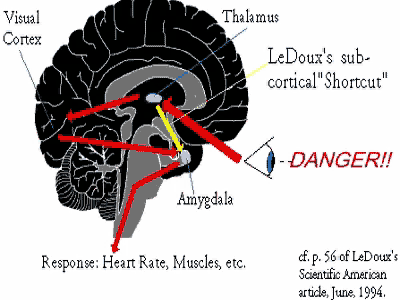
Home
What is neurofeedback? In simplest terms, neurofeedback is the process of showing the brain its own activity so that it can learn to change it. This training teaches the brain to be more efficient and effective – to be in the right gear for the task at hand. The brain produces waves of rhythmic electrical activity that are detectable with electrodes placed on the scalp, a measurement known as an electroencephalogram (literally, "electrical brain picture"), or EEG. The EEG carries information related to thought, metabolic state, hormonal state, attention, feelings and emotions. Most people are aware of the EEG primarily as a diagnostic test for abnormal brain activity such as seizures. That is about to change. For four decades, a dedicated group of researchers have demonstrated that you can actually improve many problems by feeding the EEG back to the brain in real time through sounds and images. According to Candace Pert, PhD, former chief of Brain Biochemistry at the National Institute of Mental Health and featured in What the Bleep Do We Know!?: "Neurofeedback is on the cutting edge of the mind-body revolution. I believe it is one of the treatments that will keep us moving toward an era of new approaches of naturally managing our health." With its use of scientific measurements and equipment, neurofeedback can seem intimidating and complex. Others in the field have attempted to remedy this by creating systems that employ a one-size-fits-all-brains approach. At BrainPaint we follow the research, and our mission was to create a system that would offer the full flexibility of an expert neurofeedback practitioner through a user interface that is easier to understand than most video games. Plus, it incorporates fractal feedback - a new feedback delivery system based on the shapes of the wave forms. This new metric is currently being scientifically validated in a UCLA study, which is yielding very positive results. Until now, the major obstacle keeping neurofeedback out of the hands of the public has been its high cost. We believe that everyone who wants to try this approach should have access to it, and BrainPaint tears down the cost barrier with its unparalleled affordability.
The Problem of Stress Most people have come to accept the burden of constant stress as an inescapable part of modern life, with its transient relationships, financial uncertainties, and constantly changing work demands. And when that stress becomes more than we can bear sometimes our brain gets into inappropriate states and it doesn't direct our emotions or actions efficiently. We start to break down and develop symptoms, the nature of which depends on our particular physiological fault lines. The result might be addiction, panic attacks, depression, irritable bowel syndrome, ADHD, insomnia, or any of the other problems that seem to originate at the interface between mind and body.
|
||
  |
From Reactive to Interactive Brain |
|
The human brain has made us the ruling species of our planet. Its functions have given birth to one historical revolution after another: the Agricultural, the Industrial, and the present Information Revolution. Yet, for all the rapid progress man has brought about since the caveman days, the brain has clung tenaciously to its own Paleolithic wiring. This becomes especially noticeable when we are under stress--which for most people is nearly always--and we react with the limited response set of prehistoric man: run, fight, or freeze. These knee-jerk reactions were indispensable to our ancestors, who routinely had to flee from predators. But in today's world our survival is usually not at stake, and the problems we face require a calm mind and creative problem solving. Unfortunately, the very parts of the brain that allow such reasoned response are bypassed when we are under stress. Instead, we make decisions based on fear, a fact that stifles our creativity in everyday life. One of the goals of neurofeedback is to evolve the reactive brain into one that is interactive with its environment during a crisis. |
||
| How does neurofeedback work? |
||
We are constantly receiving feedback from our world, then we learn and adapt accordingly. This is the predominant way that we are taught new behaviors and neurofeedback works in the same way. Great examples of feedback loops include:
In the case of EEG biofeedback, software gives you visual and audio feedback on states of emotion and cognition that are extracted from your EEG. Your brain then learns to improve the management of these states. Once these new developmental skills are learned they eventually become automatic. Just as you always remember how to ride a bike, improvements made with neurofeedback you usually keep.
|
||